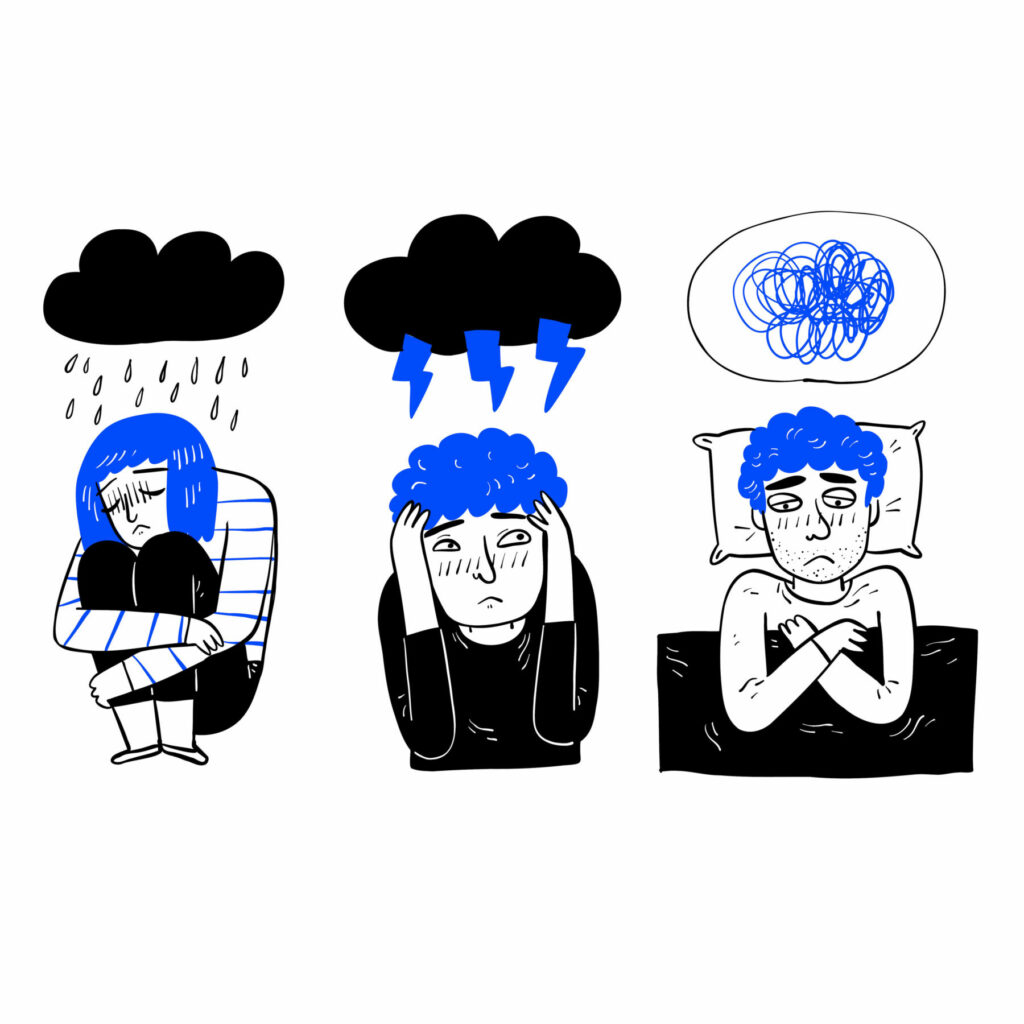Trauma Therapy: Types of Trauma-Specific Treatments

The experience of trauma is an almost universal experience. Whether you’ve experienced chronic trauma over long periods of time (e.g., childhood trauma, intimate partner violence) or more acute experiences (e.g., car accidents, acts of violence) the mental and physical health outcomes of trauma can affect interpersonal relationships and even out physiological processes.
Seeking therapy for trauma can be an arduous task in and of itself. Knowing who and what to look for is an important part of the process. Treating and resolving the lingering effects of a traumatic experience requires a foundation of knowledge and skills, and the right trauma therapist or counselor.
What is Trauma, and what is PTSD?
Trauma can broadly be identified by what impact it has on an individual, group, or community. That is, trauma has the effect of changing how individuals and groups understand and navigate the world when a sense of certainty has been removed or changed. Trust built within interpersonal relationships or the consistency of a drive home can be undercut through the experience of trauma.
However, it is important to remember that not every incidence of trauma can lead to a diagnosis of Post-Traumatic Stress Disorder (PTSD). Effective intervention by way of trauma therapy and counseling can reduce the chances of a traumatic experience leading to a diagnosis of PTSD and boost the potential for post-traumatic growth.
A diagnosis of PTSD is identified by various factors such as changes in thought patterns, hyper-sensitivities to changes in the environment, mood disruptions, and avoidance of experiences similar to the traumatic event, among others. These changes must significantly impact day-to-day life and persist over a period of time.
A diagnosis of PTSD may also be accompanied by additional diagnoses such as anxiety or depression which can also be addressed simultaneously through effective trauma therapy. Locating a professional to assist in counseling or therapy for trauma means also locating a professional with the knowledge and skill to effectively provide therapy for trauma.
Types of Trauma-Specific Treatments
Due to the widespread experiences of trauma, a number of treatment modalities have been developed to meet the needs of those seeking trauma therapy. Many of these modalities fall under the umbrella of Cognitive Behavioral Therapy – a type of treatment that focuses on a person’s thoughts/cognitions and behaviors.
For example, Trauma-Informed Care (TIC) is a set of practices and knowledge wherein a professional is aware and knowledgeable of the impact of trauma on an individual or group in order to best serve the needs of clients. Conversely, Trauma-Focused Therapy is a type of therapy for trauma wherein the focus of the counseling is on addressing the trauma itself.
Many mental health professionals are trained in being trauma-informed but are not specifically trained in trauma-focused therapy. The more common approaches to therapy for trauma are explored below.
Trauma-Informed and Trauma-Focused CBT
This type of trauma therapy utilizes the knowledge and skills of being trauma-informed in order to effectively implement the principles of CBT. For example, if a person has experienced traumatic experiences in childhood, they may develop deprecating self-talk or hold a negative view of themselves or others over time.
This treatment modality allows a mental health professional to develop and navigate a treatment plan with the understanding of how trauma can alter cognitive processes and physiological changes. Additional support, patience, and empathy are often combined with attention to physiological or somatic interventions to reduce unwanted behaviors and increase the desired ones.
Trauma-Focused CBT is often used in addressing trauma and PTSD in children and adolescents and typically includes providing psychoeducation, relaxation and calming skills training, and building resiliency. TF-CBT also commonly incorporates storytelling to assist in the processing of traumatic experiences (see Narrative Therapy below).
Eye Movement Desensitization and Reprocessing
Also referenced by its acronym, EMDR, this treatment modality is largely based on the understanding of how our brains have the power to compartmentalize and communicate with itself. One cognitive-based effect of trauma is how the brain learns to compartmentalize in a way that is not always helpful.
EMDR as a modality utilizes visual stimuli, often with specific equipment, to stimulate both hemispheres of the brain to communicate more effectively with one another (Eye Movement). Once this practice has been established, a trauma therapist will generally prompt the client to explore and share the traumatic experience(s).
The sharing of trauma alongside the eye movements, and in a therapeutic space, allows for the brain to alter how it interacts with the traumatic experience (Desensitization). Through continued work, the effects of the trauma are reduced (Reprocessing).
EMDR is often used in conjunction with other forms of behavior change to assist in the work being done in session. Mental health professionals must be trained and supervised to provide EMDR to clients.
Narrative Therapy
A non-CBT-based treatment, Narrative Therapy has been effectively used to assist those in managing and reducing the unwanted side effects of trauma and PTSD. Narratives are the stories we develop and employ that allow us to make sense of our lives, the people in them, and our experiences.
As a post-modern approach to mental health informed by Feminist principles, Narrative infuses aspects of creative story writing, including identifying themes, motifs, character development, juxtaposition, and resolving conflict to empower the client to re-story their trauma in a healing way.
Through the process of re-storying, clients are given the opportunity to externalize their experiences and have more control over how their story of trauma can be edited and rewritten. For those who are less inclined toward CBT approaches or those who are looking for different perspectives, Narrative can be a more creative way to confront the problematic aspects of PTSD and increase the opportunities for post-traumatic growth.
Narrative is also an effective treatment modality for those who have cultural backgrounds or identities that already infuse storytelling as part of cultural engagement. Other, creative types of treatment can include play therapy for children and art and music therapy for all ages.
Additional Therapy Options for Trauma
Although there are a variety of ways for a mental health professional to help alleviate the experiences of PTSD stemming from trauma, a thorough assessment is necessary to begin. An official assessment completed by a mental health professional will help to identify where and how the trauma responses are experienced. These specific manifestations of post-traumatic experiences will guide the appropriate treatment modality and ultimate treatment plan.
Other, commonly used treatment therapy for trauma can include modalities such as Prolonged Exposure (a type of CBT) used to expose a client to a triggering event or experience in order to recalibrate the underlying neurological and physiological reactions to stress.
Dialectical Behavior Therapy (DBT), is a modality in which clients learn the knowledge and skills for more effective interpersonal relationships, reduce emotional distress, and increase problem-solving and boundary-setting. (Mental health professionals must be trained and certified to provide DBT.)
Regardless of the treatment type or modality used, if you are seeking assistance with helping to resolve aspects of trauma, it is important that you seek a trained and qualified mental health professional.
To help, be on the lookout for provider profiles that clearly communicate a professional’s education and licensure credentials and those that include specific certifications for those practices that require them.
Seeking treatment and assistance for post-trauma healing can be a difficult task, but knowing what and who you are looking for can make that process more efficient and get you on the way to experiencing a deeper level of post-traumatic growth.
Written by: Vincent Marasco
This blog is made for informational and educational purposes only. It is not medical advice. The information in this blog is not intended to (1) replace a one-on-one relationship with a qualified licensed health care provider, (2) create or establish a provider-patient relationship, or (3) create a duty for us to follow up with you.



